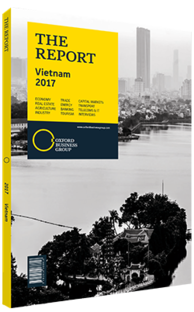Life policies in Vietnam's insurance sector see rapid growth due to increasing income levels
The largest and fastest-growing segment of the industry, the life insurance segment is set to continue its expansion as incomes grow and awareness rises. Life insurance premiums rose by 31% in 2016, reaching VND69.7trn ($3.1bn), according to the Insurance Supervisory Authority (ISA). The life segment is around twice the size of non-life, but the ISA expects growth of 25% for the segment in 2017.
Higher Incomes
The single most important driver of growth is rising incomes. Vietnam has had one of the world’s highest rates of income growth since 1990, according to the World Bank. The Association of Vietnamese Insurers sees the government’s target of lifting income per head to $3750 per year by 2020 as an opportunity for the sector, as more Vietnamese achieve the disposable income levels that make acquiring life insurance policies possible.
With this pace of growth comes challenges as well as opportunities. “People have become wealthier over time, and products that were adequate 10 years ago may no longer be,” Wilf Blackburn, former CEO of Prudential Vietnam, told OBG. “Insurers need to find ways of re-evaluating their needs and provide a product that is suitable to the growing lower-middle class. Not all insurance companies are good at it.”
Product Range
Life insurers are permitted to offer seven types of products; whole life insurance, pure endowment insurance, term life insurance, endowment insurance, annuity insurance, investment-linked insurance and pension insurance.
As premiums are closely regulated by the MoF, companies compete largely on product range, service quality and value-added packages. Life insurance is the only segment open to 100% foreign-owned entities, which has made the segment particularly competitive with a wide range of foreign players now present. As a result, market leaders emphasise innovation in marketing, such as increasing use of digital media, loyalty programmes and product offerings.
Investment-linked insurance was permitted by the MoF in 2007. While traditional life insurance invests premiums in financial products regarded as “safer”, particularly sovereign and government-guaranteed bonds, investment-linked insurance allows investment in riskier but potentially more profitable channels such as real estate and securities. The development of this form of life insurance has gone hand-in-hand with the evolution of Vietnam’s securities markets. Thus the expected launch of a derivatives market, which will initially focus on futures, in 2017 should further diversify options for those buying investment-linked insurance products.
Growth Areas
One of the most promising potential sources of growth over the medium term is from families looking to use insurance to save for their children’s education. Vietnamese parents invest in extra tutoring, and those who can, seek opportunities at foreign universities and colleges due to the shortcomings of the domestic tertiary education system. “People are increasingly looking to save for their children’s education, and savings options are limited with interest rates fluctuating and equities underdeveloped, whereas insurance gives a guaranteed return,” Gaurav Sharma, CEO of BIDV MetLife, told OBG.
Other areas of growth include critical illness coverage, particularly as rates of chronic diseases rise and the population ages. Dai-ichi Life, for example, has expanded its coverage of critical diseases from 35 to 88 illnesses. The Japanese-owned insurer is also the only company to offer funeral coverage.
“Health insurance is high on the agenda for many families,” Paul Nguyen, CEO of Manulife Vietnam, told OBG. “But fraud in hospitals is a problem, so there’s a risk it can be a loss-leader for insurers.”
A number of sector players are additionally active in the fledgling micro-insurance segment, although this is considered closer to a corporate social responsibility activity than central to business development.
You have reached the limit of premium articles you can view for free.
Choose from the options below to purchase print or digital editions of our Reports. You can also purchase a website subscription giving you unlimited access to all of our Reports online for 12 months.
If you have already purchased this Report or have a website subscription, please login to continue.

